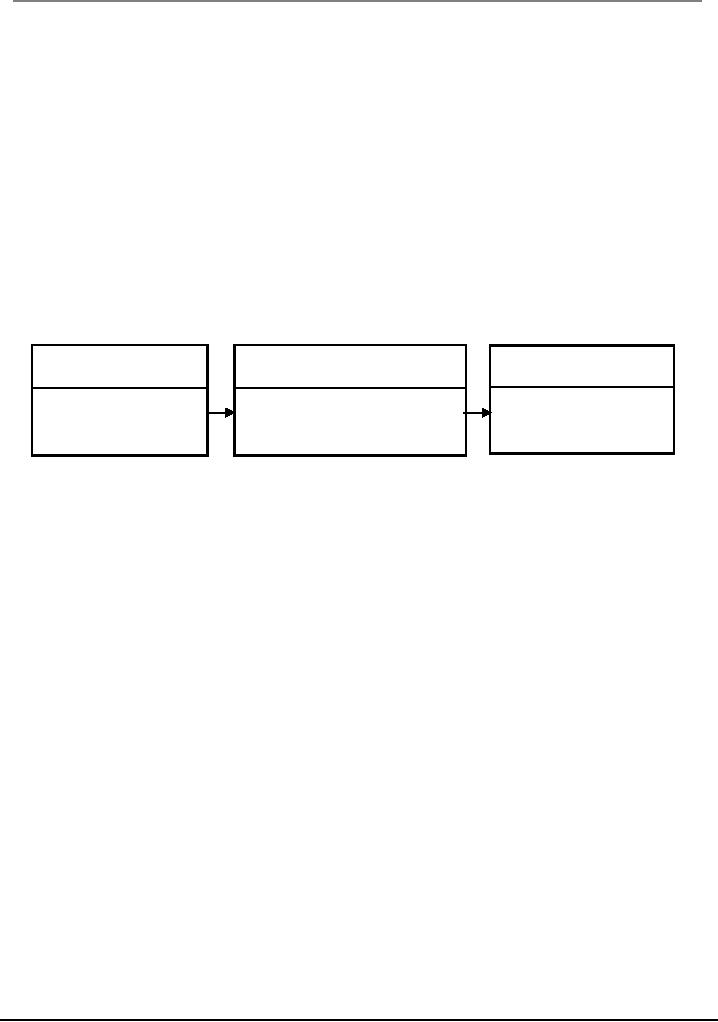 |
ANXIETY, AROUSAL, AND STRESS RELATIONSHIPS:Emotion and Mood |
| << SITUATIONAL FACTORS RELATED TO ANXIETY AND MOOD:Type of Sport |
| ANXIETY, AROUSAL, AND STRESS RELATIONSHIPS:The Inverted-U Theory >> |

VU
Sport
Psychology (PSY407)
Lesson
18
ANXIETY,
AROUSAL, AND STRESS
RELATIONSHIPS
In
explaining the relationship between anxiety,
arousal, and stress, and
their relationship to athletic
performance,
it
is important that we understand a number
of conceptual relationships. This topic
is divided into six
sections,
they
are:
Differentiating
among the terms anxiety, arousal
and stress
The
multidimensional nature of anxiety
Antecedents
of anxiety
Measurement
of anxiety
Time-to-event
nature of precompetitive anxiety
The
relationship between anxiety and
performance
Three
sections are discussed in this
lecture and the remaining four in
lecture nineteen.
Differentiating
Among Anxiety, Arousal, and
Stress
The
emotion of anxiety affects athletic
performance, however, the problem is that
the term "anxiety" is closely
associated
with the terms "arousal" and
"stress". We will look how
these terms are similar
and how they differ.
The
discussion will focus upon
emotions and mood, Selye's concepts of
stress, and Lazarus's
concept of stress
process.
Emotion
and Mood
Lazarus
(2000a) identified fifteen
different emotions and themes
associated with each
emotion. One of these
emotions
is anxiety, which is defined as "facing
uncertain, existential threat". An emotion,
such as anxiety
occurs
following appraisal and an evaluation of
coping resources. A similar chain of
events occurs for the
emotion
of anger, which he defines as occurring
in response to "a demeaning offense
against me or mine"
Lazarus
identifies anxiety as one of the emotions that
may have substantial impact
upon how an athlete
performs.
Other emotions, such as
anger, guilt and shame,
relief, happiness, and pride,
may also have a
powerful
influence
upon performance. He states
that emotions should not be lumped into
positive or negative
groups
when
one is assessing their effect
upon athletic performance. Rather, the
different emotions should be
considered
as discrete emotions having discrete
effects upon performance.
Anger, for example, is
often
considered
a negative emotion, yet it
may have either an inhibitory or a
facilitory effect upon
performance.
Anxiety,
then, is an emotion that arises in
response to how we in interpret
and appraise an
environmental
situation
such as competition. Emotions
are sudden reactions to
situation that last only
for seconds, minutes,
or
perhaps
hours. Moods, however, are
more diffuse, and may last
for weeks or even
months.
Selye's
Concept of Stress
Hans
Selye (pronounced "sale-ye") (1983)
defined stress as the "nonspecific
response of the body to
any
demand
made upon it." In a sense
what Selye is saying is that when
aroused, the body is under stress
regardless
of
whether the cause is something negative
like anger or positive like
joy. Anger and anxiety are
much harder on
the
body than are joy
and happiness.
61

VU
Sport
Psychology (PSY407)
Selye
allowed that there must be
two different kinds of stress.
The "good stress" he labeled
eustress, and
the
"bad stress" he labeled
distress.
The
Stress Process
The
stress process is really the
information processing model in action as illustrated
in the diagram
below.
The stress process begins
with the stimulus (competitive situation) on the
left and results in
the
response
(stress response) on the right. In
between the stimulus and the
response is cognition, or
thought
processes. Cognition determines
how the athlete will
respond. The stress process
begins with the
environment
or competitive situation on the left. This is the
stimulus. The competitive situation is
not by
itself
stressful. It is how the athlete
interprets the situation that determines whether or
not the situation is
stressful
or not. Consider the situation in
which an athlete finds himself on the
foul line in a
basketball
game
with the outcome of the game
resting upon performance. To
most people this would be an
extremely
stressful situation. However, to many
basketball players this is exactly the
kind of situation that
they
seek. The situation is not
intimidating because they have
supreme confidence in their skill
and the
thought
of failure does not enter
into their minds.
Response
Stimulus
Appraisal
of Situation
(imbalance)
Stress
response
1.
Primary
Environmental
2.
Secondary
Upon
being confronted with a potentially
stressful situation, the individual
conducts an instantaneous
appraisal
or evaluation of the situation. Appraisal of the situation occurs
on two levels. The first
is
referred
to as primary appraisal; the second is as
secondary appraisal. In primary
appraisal, the athlete
determines
if she has a personal stake
in the outcome. If the athlete determines
that the outcome is very
important
to her, then secondary
appraisal becomes
important.
In
the secondary appraisal, the athlete
evaluates her personal coping resources
to deal with the
competitive
situation. The outcomes of the primary
and secondary appraisals
determine whether the
stress
response will or will not
occur.
If
an athlete determines either that it
makers no difference to him personally,
then the stress
response
does
not occur. If, however, the
athlete determines that he
does not have the resources
(skill, confidence,
experience)
to cope with the situation, the stress
response will occur.
The
Multidimensional Nature of
Anxiety
Anxiety
is multidimensional in two different
ways. Anxiety has both a
trait component and a
state
component.
The trait component is like a personality
disposition, whereas the state component is
a
situation-specific
response. State anxiety is an immediate
emotional state that is
characterized by
apprehension,
fear, tension, and an increase in physiological
arousal. Conversely, trait anxiety is
a
predisposition
to perceive certain environmental
situations as threatening and to respond
to these
situations
with increased state anxiety
(Spielberger, 1971). If an athlete
has a high level of
competitive
trait
anxiety, she is likely to respond to an
actual competitive situation
with a high level of
competitive
state
anxiety.
Anxiety
is also multidimensional in the sense
that it is believed that there
are both cognitive and
somatic
components
to anxiety. Cognitive anxiety is the mental component
of anxiety caused by such things
as
fear
of negative social evaluation, fear of
failure, and loss of
self-esteem. Somatic anxiety is the
physical
62

VU
Sport
Psychology (PSY407)
component
of anxiety and reflects the perception of
such psychological responses as
increased heart rate,
respiration,
and muscular tension. Both
state and trait anxiety are
believed to have cognitive and
somatic
components.
Sport psychological literature, and the
notion that anxiety has both
cognitive and somatic
components
is referred as multidimensional anxiety theory.
Antecedents
of Precompetitive State of
Anxiety
Competitive
state anxiety that occurs
prior to a competitive situation is
referred to as precompetitive state of
anxiety.
According to Endler (1978,
1983), there are five
specific antecedents, or factors
that lead to an
increase
in
anxiety in anticipation of an achievement situation.
These five factors
are:
Fear
of performance failure. Fear
of getting defeated by a weaker opponent
could pose a threat to
1.
an
athlete's ego.
Fear
of negative social evaluation.
Fear
of being evaluated negatively by thousands of
spectators
2.
could
pose a threat to self-esteem.
Fear
of physical harm. Fear
of being hit in the hit in the head by a
90 mph fastball could pose a
3.
serious
threat.
Situation
ambiguity. Not
knowing if she is going to
start a match is sometimes
stressful to an
4.
athlete.
Disruption
of well-learned routine. Being
asked to change the way he
does things without practice
5.
and
warming could be threatening to an athlete.
Research
has identified fear of
failure and fear of negative
social evaluation as the most likely
causes of state
anxiety.
Another antecedent of state anxiety is
the perceived importance of a competition.
Athletes who exhibit
high
levels of competitive trait anxiety
and perceive an event to be important
are more likely to perceive
it as
stressful.
In addition to situation factors as
identified, a number of personality variables
have been identified
as
being
antecedents, or predictors, of competitive
state of anxiety. These include:
1.
Competitive
trait anxiety: Those high on anxiety
are also high on anxiety in
competition.
2.
Goal
orientation: High on goal
orientation are high on
anxiety.
3.
Perfectionism:
Expecting perfection from
self.
Perfectionism
involves the setting of exceptionally
high performance standards
for one's self. Researchers
have
identified
two specific types of perfectionism:
normal and neurotic. Normal perfectionism
is typically possessed
by
highly motivated and
achieving athlete. Conversely,
neurotic perfectionism is a destructive
personal
characteristic
that is associated inflexibility
and a variety of other maladaptive
cognitions and affective responses
such
as low self-esteem, guilt
and shame.
References
Cox,
H. Richard. (2002). Sport Psychology:
Concepts and Applications.
(Fifth Edition). New York:
McGraw-
Hill
Companies
Lavallec.
D., Kremer, J., Moran,
A., & Williams. M. (2004)
Sports Psychology: Contemporary Themes.
New
York:
Palgrave Macmillan
Publishers
63
Table of Contents:
- SPORT PSYCHOLOGY DEFINED:Issue of Certification, The Research Sport Psychologist
- SELF-CONFIDENCE AND SPORT PSYCHOLOGY:Successful Performance, Verbal persuasion
- SELECTING SELF-TALK STATEMENTS:Skill accusation, Controlling effort
- GOAL ORIENTATION:Goal Involvement, Motivational Climate
- CAUSAL ATTRIBUTION IN SPORT:Fritz Heiderís Contribution, Other Considerations
- CAUSAL ATTRIBUTIONS IN COMPETITIVE SITUATIONS:Locus of Causality
- MOTIVATION IN SPORT:Social Factors, Success and Failure, Coachesí Behavior
- FLOW: THE PSYCHOLOGY OF OPTIMAL EXPERIENCE, Goal Setting in Sport
- PRINCIPLES OF EFFECTIVE GOAL SETTING:Clearly identify time constraints
- A TEAM APPROACH TO SETTING GOALS:The Planning Phase, The Meeting Phase
- YOUTH SPORT:Distress and anxiety, Coach-Parent Relationships
- ATTENTION AND CONCENTRATION IN SPORT:Information Processing, Memory Systems
- ATTENTION AND CONCENTRATION IN SPORT:Measuring Attentional Focus
- PERSONALITY AND THE ATHLETE:Personality Defined, Psychodynamic Theory
- THE MEASUREMENT OF PERSONALITY:Projective Procedures, Structured Questionnaire
- PERSONALITY AND THE ATHLETE:Athletic Motivation Inventory, Personality Sport Type
- SITUATIONAL FACTORS RELATED TO ANXIETY AND MOOD:Type of Sport
- ANXIETY, AROUSAL, AND STRESS RELATIONSHIPS:Emotion and Mood
- ANXIETY, AROUSAL, AND STRESS RELATIONSHIPS:The Inverted-U Theory
- ALTERNATIVES TO INVERTED-U THEORY:Apterís Reversal Theory
- COPING STRATEGIES IN SPORT:Measurement of Coping Skill
- RELAXATION STRATEGIES FOR SPORT:Progressive Relaxation, Autogenic Training
- AROUSAL ENERGIZING STRATEGIES:Team Energizing Strategies, Fan Support
- AROUSAL ENERGIZING STRATEGIES:Precompetition Workout, Individual Goal Setting
- IMAGERY:Skill Level of the Athletes, Time Factors and Mental Practice
- IMAGERY:Symbolic Learning Theory, Imagery Perspective. Sensory Mode
- IMAGERY:Paivioís Two-Dimensional Model, Developing Imagery Skills
- THE ROLE OF HYPNOSIS IN SPORT:Defining Hypnosis, Social-Cognitive Theory
- THE ROLE OF HYPNOSIS IN SPORT:Achieving the Hypnotic Trance, Hypnotic Phase
- PSYCHOLOGICAL SKILLS TRAINING:Psychological Skills Training Program
- PSYCHOLOGICAL SKILLS TRAINING:Performance profiling, Performance routines
- ETHICS IN SPORT PSYCHOLOGY:Competence, Integrity, Social Responsibility
- AGGRESSION AND VIOLENCE IN SPORT:Defining Aggression, Catharsis hypothesis
- AGGRESSION AND VIOLENCE IN SPORT:The Catharsis Effect, Fan Violence
- AUDIENCE AND CROWD EFFECTS IN SPORTS:Social Facilitation, Crowd Hostility
- TEAM COHESION IN SPORT:Measurement of Team Cohesion
- TEAM COHESION IN SPORT:Predicting Future Participation, Team Building
- LEADERSHIP IN SPORT:Fiedlerís Contingency Theory, Coach-Athlete Compatibility
- EXERCISE PSYCHOLOGY:Special Populations, Clinical Patients
- EXERCISE PSYCHOLOGY:Social Interaction Hypothesis, Amine Hypothesis
- EXERCISE PSYCHOLOGY:The Theory of Planned Behavior, Social Cognitive Theory
- EXERCISE PSYCHOLOGY:Exercise Addiction, Bulimia Nervosa, Muscle Dysmorphia
- BURNOUT IN ATHLETES:Overtraining and Overreaching, Recommended Intervention
- THE PSYCHOLOGY OF ATHLETIC INJURIES:Personality Factors, Coping Resources
- DRUG ABUSE IN SPORT AND EXERCISE:Stimulants, Depressants